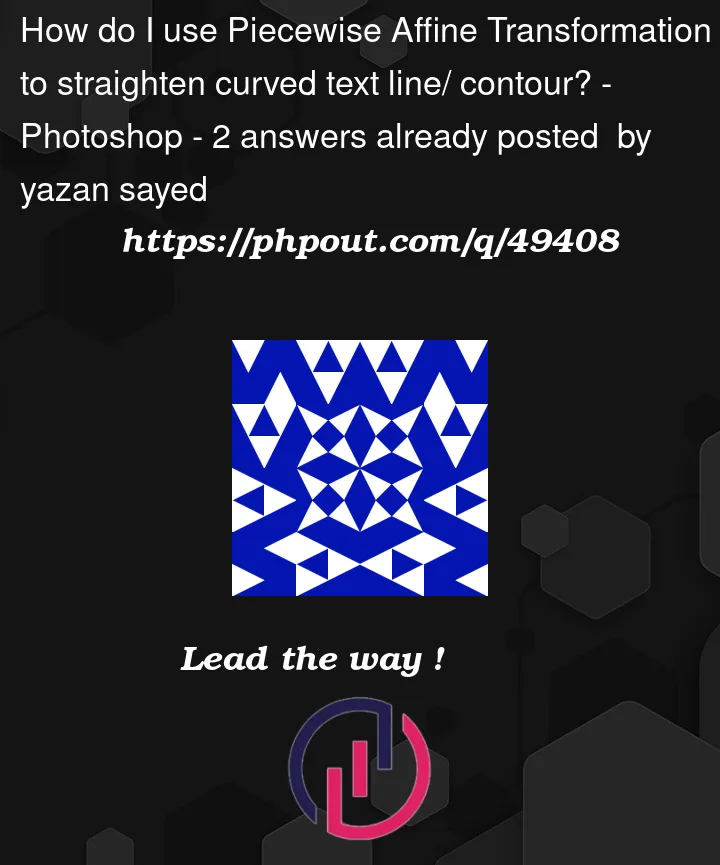and the following bounding contour( which is a smooth version of the output of a text-detection neural network of the above image ), so this contour is a given.
I need to warp both images so that I end up with a straight enough textline, so that it can be fed to a text recognition neural network:
using Piecewise Affine Transformation, or some other method. with an implementation if possible or key points of implementation in python.
I know how to find the medial axis, order its points, simplify it (e.g using Douglas-Peucker algorithm), and find the corresponding points on a straight line.
EDIT: the question can be rephrased -naively- as the following :
have you tried the "puppet warp" feature in Adobe Photoshop? you specify "joint" points on an image , and you move these points to the desired place to perform the image warping, we can calculate the source points using a simplified medial axis (e.g 20 points instead of 200 points), and calculate the corresponding target points on a straight line, how to perform Piecewise Affine Transformation using these two sets of points( source and target)?
EDIT: modified the images, my bad
Papers
Here’s a paper that does the needed result:
A Novel Technique for Unwarping Curved Handwritten Texts Using Mathematical Morphology and Piecewise Affine Transformation
another paper: A novel method for straightening curved text-lines in stylistic documents







2
Answers
Full code also available in this notebook ,
runtime -> run allto reproduce the result.1- find medial axis , e.g using
skimage.morphology.skeletonizeand simplify it ,e.g usingshapely object.simplify, I used a tolerance of 2 , the medial axis points are in white:2- find the corresponding points on a straight line, using the distance between each point and the next:
3 - also added extra points on the ends, colored blue, so that the points fit the entire contour length
4- create 2 copies of the source and target points, one copy translated up and the other translated down (I choose an offset of 50 here), so the source points are now like this, please note that simple upward/downward displacement may not be the best approach for all contours, e.g if the contour is curving with degrees > 45:
5- using the code here , perform
PiecewiseAffineTransformusing the source and target points, here's the result, it's straight enough:If the goal is to just unshift each column, then:
with the new input and the new contour from OP outputs this image: